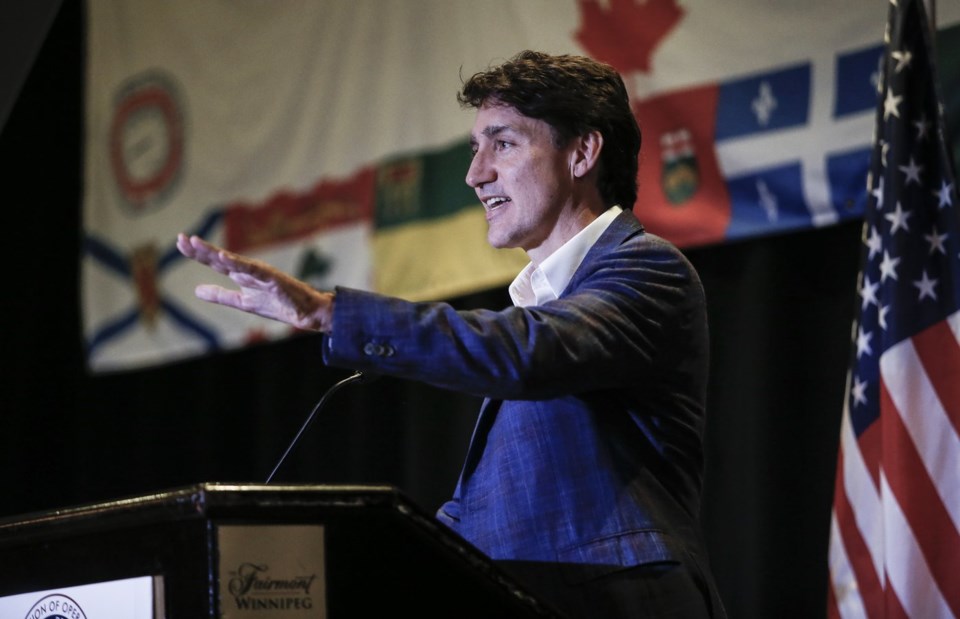OTTAWA — The Liberal government's decision to reel in the temporary foreign worker program after loosening the rules to help businesses find workers after the pandemic is sparking a contentious debate about whether governments should even try to address labour shortages.
Prime Minister Justin Trudeau announced on Monday that his government is bringing back stricter rules to stem the flow of low-wage temporary foreign workers, and he urged businesses to hire and train Canadian workers.
"Two years ago, in the aftermath of the pandemic and facing severe labour shortages, we adjusted the program for temporary foreign workers. That's what the business community needed," Trudeau said at the Liberal cabinet retreat in Halifax.
"But today's economy is very different from it was two years ago. Inflation has started to come down. Employment is higher. We no longer need as many temporary foreign workers."
Business groups have been in favour of more immigration and temporary foreign workers to help with labour shortages, but economists are pushing back against the notion that governments should intervene.
"Ideally they should do nothing, but it's hard for governments to do nothing when employers are upset," said Christopher Worswick, an economics professor at Carleton University.
Many economists argue that a tight labour market is good for workers and the economy because shortages force businesses to raise wages and invest more in productivity-enhancing technology.
"When governments and employer groups talk about shortages, it's really not clear what they mean. Does it mean that we wished at a low wage, we could hire extra workers? Well, that's not the way economies work," Worswick said.
According to public data from Immigration, Refugees and Citizenship Canada, 183,820 temporary foreign worker permits became effective in 2023. That was up from 98,025 in 2019 — an 88 per cent increase.
Following the Liberal government's announcement, Worswick has called for the temporary foreign worker program to be abolished, which he says would involve phasing out the low-wage stream and merging the high-wage stream with the economic immigration program.
Prominent economist Mike Moffatt — one of the experts who attended the Liberal cabinet retreat in Halifax — is also calling for the abolition of the non-agricultural low-wage stream of the program.
"I think we should be careful with those kind of calls, because they don't really match the reality of the economy," said Diana Palmerin-Velasco, senior director for the future of work at the Canadian Chamber of Commerce.
Palmerin-Velasco said there are many low-skilled jobs that need to be filled, including in small communities where changing demographics are making it even harder to find workers.
She also pushed back on the wage suppression argument that economists like Worswick make.
"If (businesses) have to increase those wages by a lot to attract workers, who is going to pay for that? Cost is going to be passed on to consumers at a time when our economy is not looking great," she said.
As for skilled immigration, Worswick said he's in favour of Canada trying to attract the best and brightest. But economic immigration shouldn't focus on filling labour shortages, either, he said, because it's difficult to predict where labour shortages will appear.
"I think it would be better to just focus on the skill-based immigration. Stop talking about labour shortages. Tell firms to raise their wage offers if they can't fill a position. Or, as the prime minister said ... train your workers," Worswick said.
The reaction to labour shortages after the pandemic was near-universal from business associations and politicians alike: Canada needed to bring more people into the country to fill those jobs.
Premiers applauded the federal government's decision to increase its annual immigration targets. Ontario Premier Doug Ford was particularly vocal about the need for more immigration to help fill job vacancies.
In the spring of 2022, the federal government relaxed the rules for its temporary foreign worker program and a few months later, Immigration Minister Sean Fraser announced Canada would increase its annual permanent residency target to 500,000 for 2025.
While the loosening of rules happened under his watch, Trudeau did once staunchly criticize a similar rise in temporary foreign workers under the Harper government.
In 2014, he wrote an op-ed calling for the temporary foreign worker program to be scaled back dramatically and refocused to its "original purpose" of filling jobs when no Canadian workers can be found.
"I believe it is wrong for Canada to follow the path of countries who exploit large numbers of guest workers, who have no realistic prospect of citizenship," Trudeau wrote in the Toronto Star.
"It is bad for our economy in that it depresses wages for all Canadians, but it’s even worse for our country. It puts pressure on our commitment to diversity, and creates more opportunities for division and rancour."
As for whether the Liberal government's pivot on immigration signals a change of heart when it comes to labour shortages, Worswick is unsure.
"I think that the housing crisis, if you like, is what's tipped it," he said regarding the shift on immigration.
"Governments like to talk about labour shortages. So, I'm not sure that's going away, but I think the absorptive capacity issue is on the table now."
This report by The Canadian Press was first published Aug. 28, 2024.
Nojoud Al Mallees, The Canadian Press

